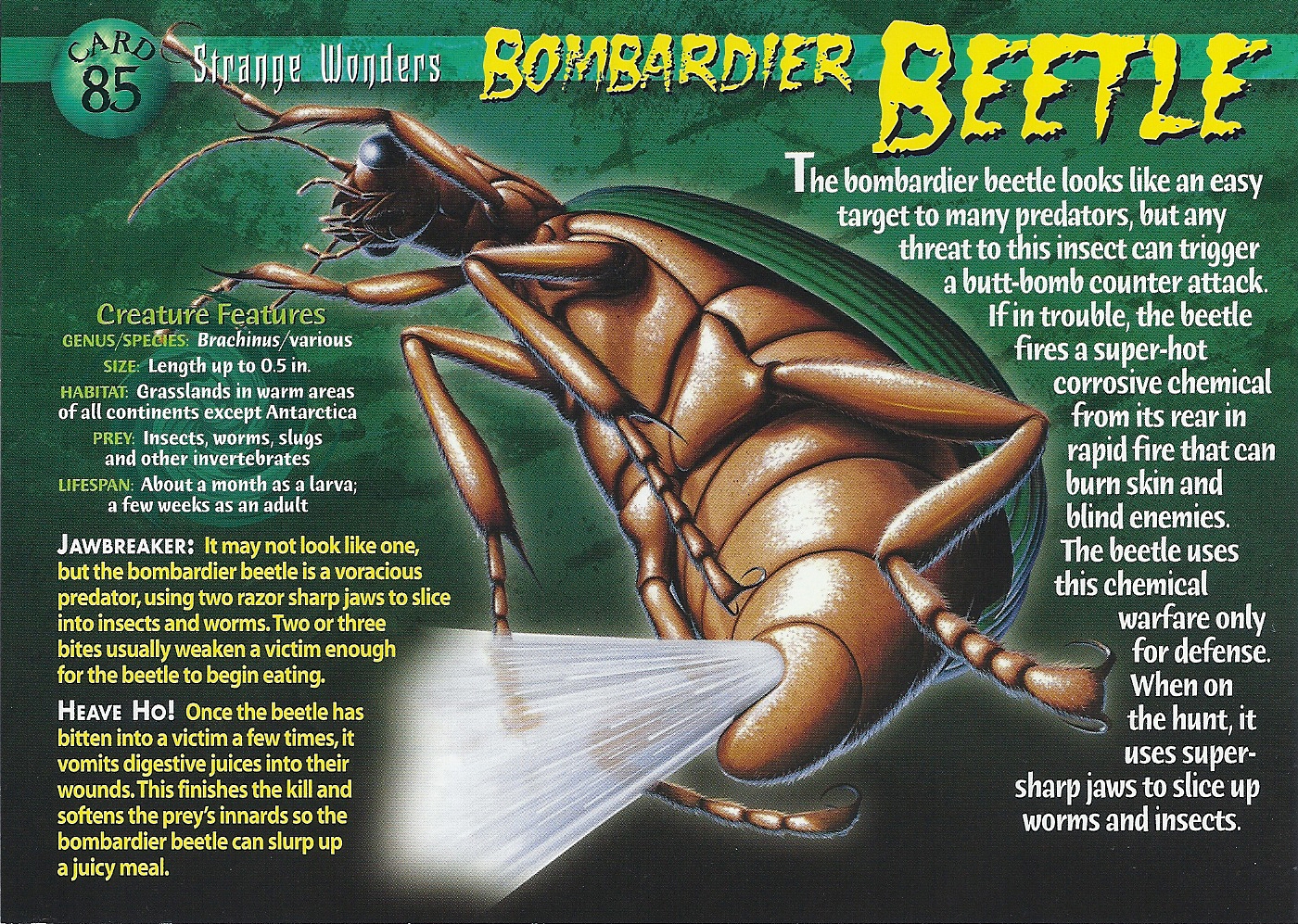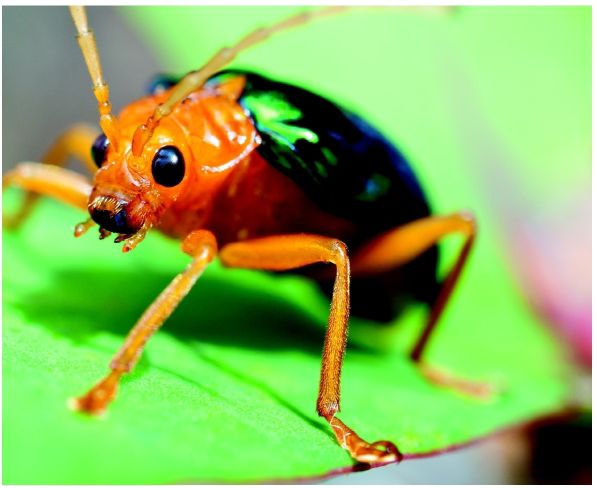

In doing so, we characterized and comparatively discussed: (1) the ultrastructure of the gland tissues producing hydroquinones and hydrogen peroxide (secretory lobes), and those producing catalases and peroxidases (accessory glands) (2) the complex anatomy of the collecting duct (3) the arrangement of the muscular bundles and the folding of the cuticle of the reservoir, suggesting a functional division of this chamber (dynamic part and storage part) (4) the great structural diversity of sculpticles inside the reaction chamber, where we could recognize six main types of microsculpture located in specific districts of the chamber. We investigated the morphology and ultrastructure of this system using optical, fluorescence, and focused ion beam (FIB/SEM) microscopy.

This paper provides the first comparative anatomical study of the explosive pygidial defensive system of bombardier beetles in species classified in three brachinine subtribes: Brachinus (Brachinina), Pheropsophus (Pheropsophina) and Aptinus (Aptinina). We find a lack of morphological similarity at the ultrastructural level, suggesting that the bombarding mechanism may have evolved independently in the Paussinae and the Brachininae, perhaps in response to different ecological pressures. We use the same microscopy techniques as used in a recent publication on the Brachininae, to compare the defensive systems of Metriini and Brachininae. The accessory chamber to the reaction chamber is a unique, derived character state common to all Paussinae examined and therefore represents a clear apomorphy of the Paussinae. We find that the internal components of the explosive defensive system, including the secretory lobes, collecting duct, reservoir chamber, valve, reaction chamber, accessory chamber and accessory glands, are only slightly different between Metrius Eschscholtz, 1829 and Sinometrius Wrase and J. Compared to other Paussinae tribes, Metriini lacks the typical flange of Coanda, the elytral fold used to direct the defensive secretions forward, but has a similar arrangement of internal components. FIB/SEM microscopy is used to analyse ultrastructural features of the cellular regions, replacing the classical transmission electron microscopy (TEM). We use dissections, histology, scanning electron microscopy (SEM), and focused ion beam microscopy (FIB/SEM) to describe and illustrate various levels of anatomical complexity. Schmidt, 2006, representatives of the two genera in this tribe. In order to complement the available information on the chemical substances and the primitive discharging mechanism of Metriini, we provide a detailed morpho-functional analysis of the explosive defensive system of Metrius contractus Eschscholtz, 1829 and Sinometrius turnai Wrase and J. The paussine tribe Metriini is broadly acknowledged as the most basal group of bombardiers. Differences between the pygidial defensive systems of Paussus favieri and those of Brachininae are discussed.īombardier beetles, belonging to the carabid subfamilies Paussinae and Brachininae, are famous for their unique ability to explosively discharge a hot spray of quinones from their pygidial glands when threatened. The defensive system of this species consists of two independent, symmetrical glands each composed of secretory lobes, a long collecting duct, a bilobed reservoir chamber, a cuticular valve, a sclerotized reaction chamber, and an accessory chamber, associated with the reaction chamber, that is surrounded by several isolated glandular cells. In this paper, we use optical, fluorescence and focused ion beam (FIB/SEM) microscopy to analyse and illustrate anatomy and ultrastructure of the explosive defensive system of Paussus favieri, a charismatic myrmecophilous species. Paussine beetles are commonly known as “flanged bombardier beetles” due to the presence of a flange on their elytra that assists in directing their defensive chemicals toward the front of their bodies. Here we provide the first detailed description of the ultrastructure of the defensive gland system of the genus Paussus, the most speciose genus in the ground beetle subfamily Paussinae. Bombardier beetles are famous for their unique ability to explosively discharge hot quinones from their pygidial glands when threatened.


 0 kommentar(er)
0 kommentar(er)
